No.135

Last night at vaguely 10:27pm, I went outside to look at the sky. It was dark, of course, and barely ten minutes earlier the moon had been a pale lopsided fire, pouring over everything in the garden a milky light, the kind that would probably lead people to making rash decisions, or to howling. But by the time I opened the door and stepped bare-footed onto the cold dry stones, the moon had been replaced by a nation of slumped clouds, and by Jupiter.
It made my heart hurt impossibly to look at it all, hurt even through the interruption of binoculars and I couldn’t very well describe to you why. A larger moon of Jupiter’s was visible and blinking, all stars temporarily obscured by the cloud, and I find when you pay even a small amount of wonder to the darker nights you are left with significantly more to think about—a bad thing, a good thing, just the way of things.
After what seemed a handful of minutes the moon began to leak through the clouds, looking like an oil spill at sea, looking like everything we still have to explain. Iridescent and unfathomable, heart still behaving like waves, there wasn’t really anything to do but stand there a little longer before turning inside and closing the door, wondering how long it would take to figure out why everything has the potential to be beautiful at night.

A FEW NOTES ON PROCESS:
Process was something that came up several times when I asked what you might like to see more of in the newsletter, and so this week instead of the now-somewhat-usual ‘Books That I Return To’ section, we have some process in an illustration context (I will perhaps write about writing another time).
What follows is how illustrations tend to shape themselves, with the time taken varying hugely depending on scale and complexity and ridiculousness—anything from 45 minutes to over 10 hours. This particular illustration featured in my most recent book proposal, which tells you precisely nothing.



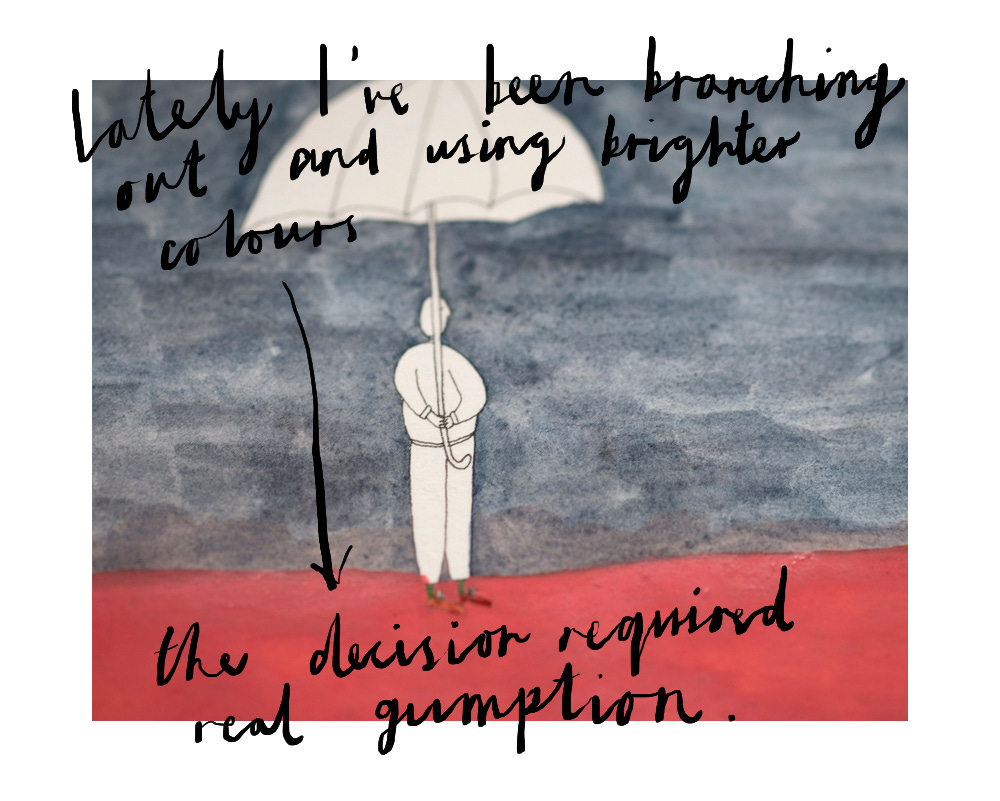

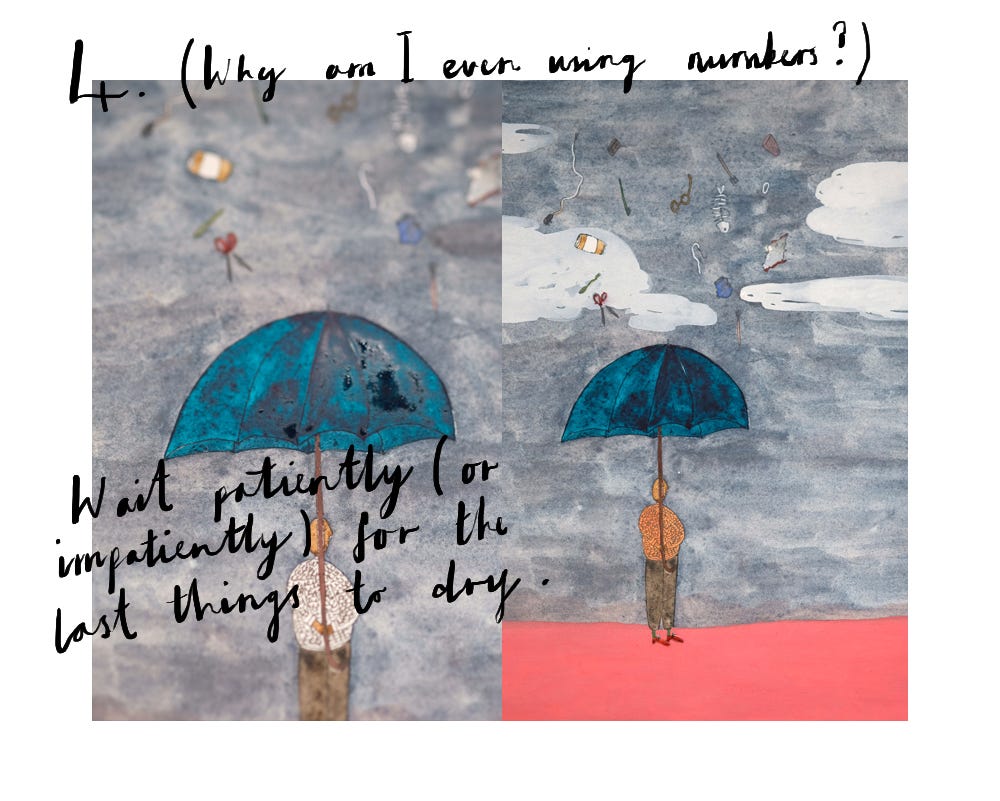
Hopefully this was at least a small amount charming. I’m considering doing more of these annontated sections about other things, like materials and ideas, so do leave a comment below if there are other things you wish to see annotated (I enjoyed this one, but only occasionally do I spend time thinking a colossal amount about process, as I believe it is highly, unhelpfully possible to become very entangled in it).
And bear in mind Rebecca Solnit:
“The ways creative work gets done are always unpredictable, demanding room to roam, refusing schedules and systems. They cannot be reduced to replicable formulas.”

THIS WEEK I FELL IN LOVE WITH:
Thanks to bookmateriality, paintings and their blues by Seth Searle.
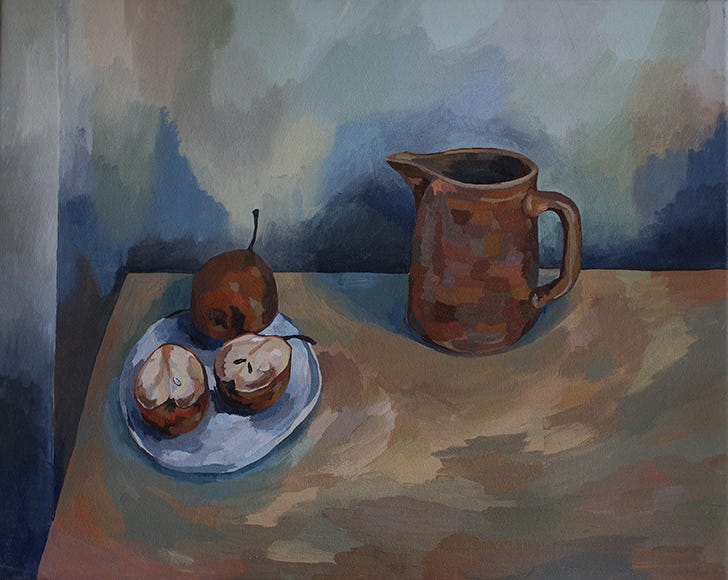
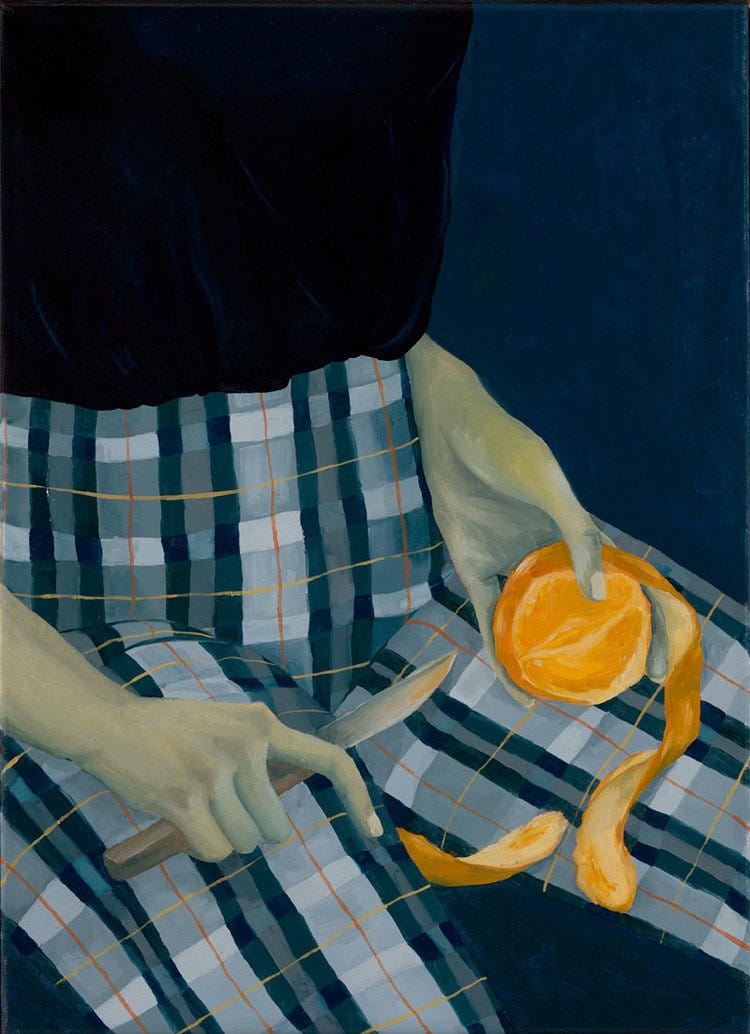

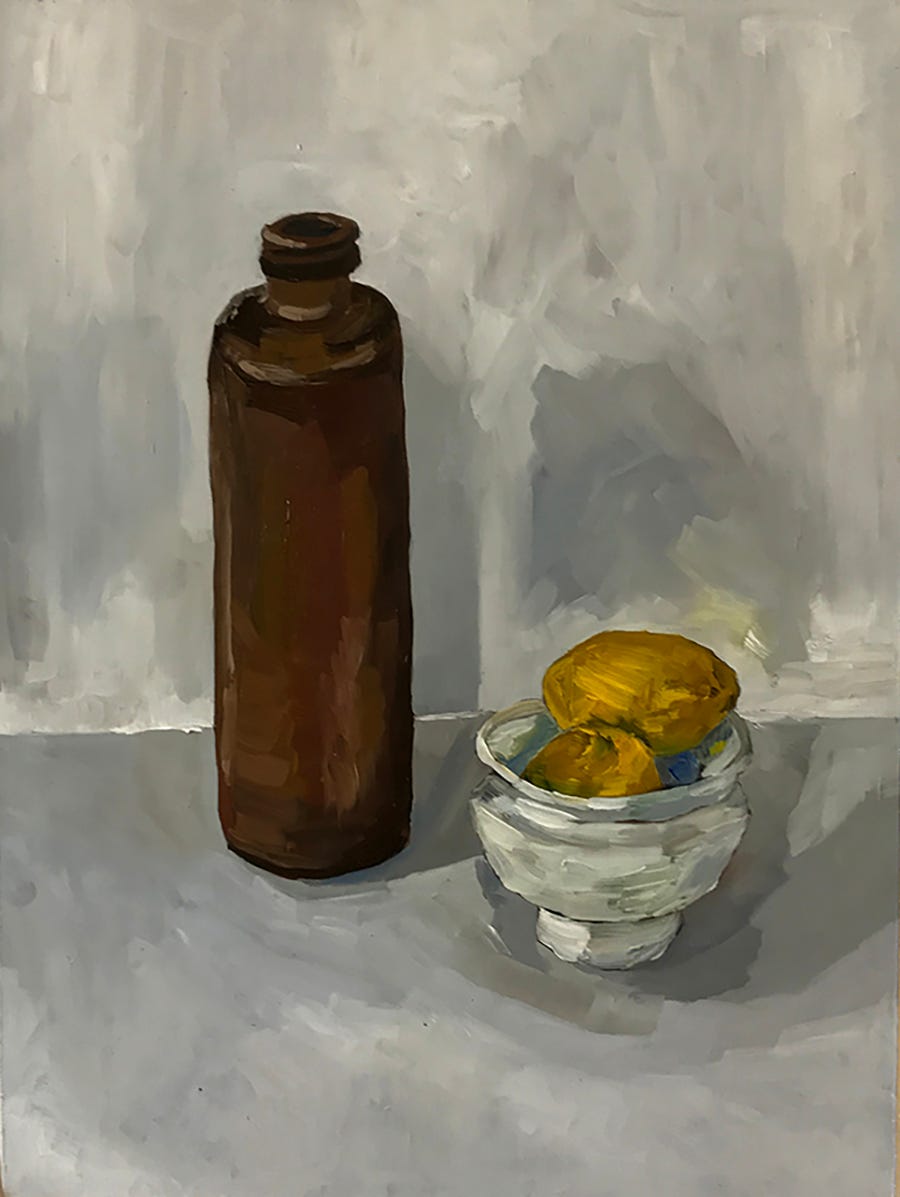
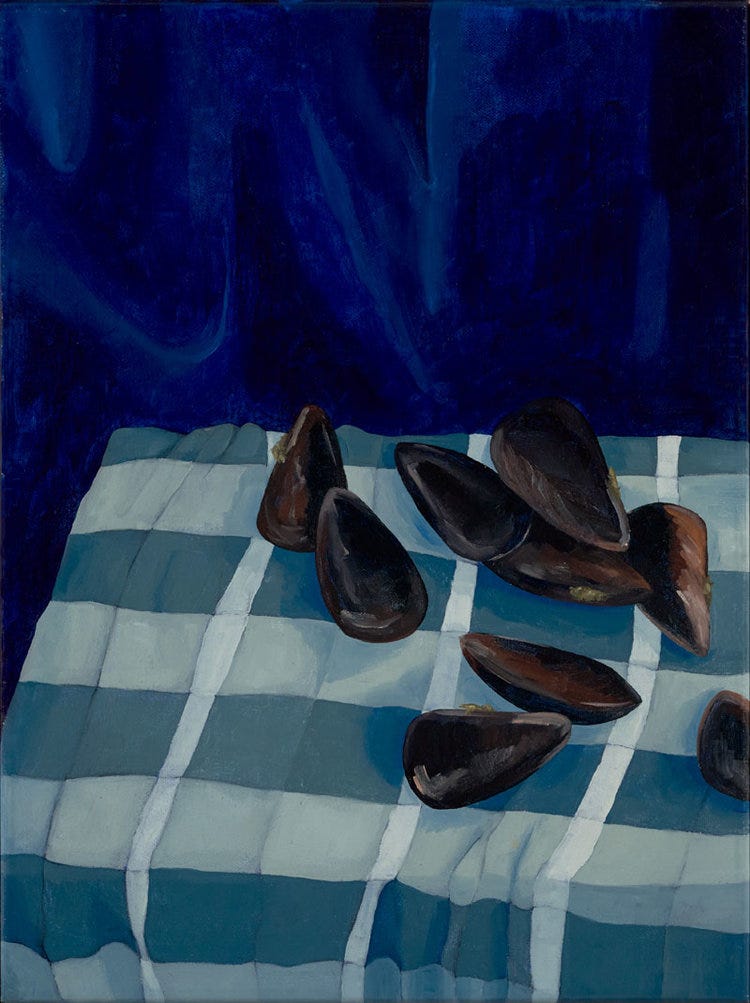

“... as if she had just discovered something incredible, like a Roman coin stuck in the paw of a kitten or a dragonfly concealed in a loaf of bread.”
Deborah Levy
The end.




